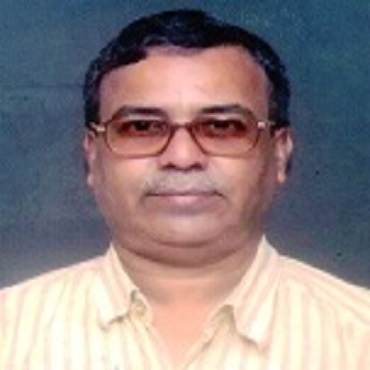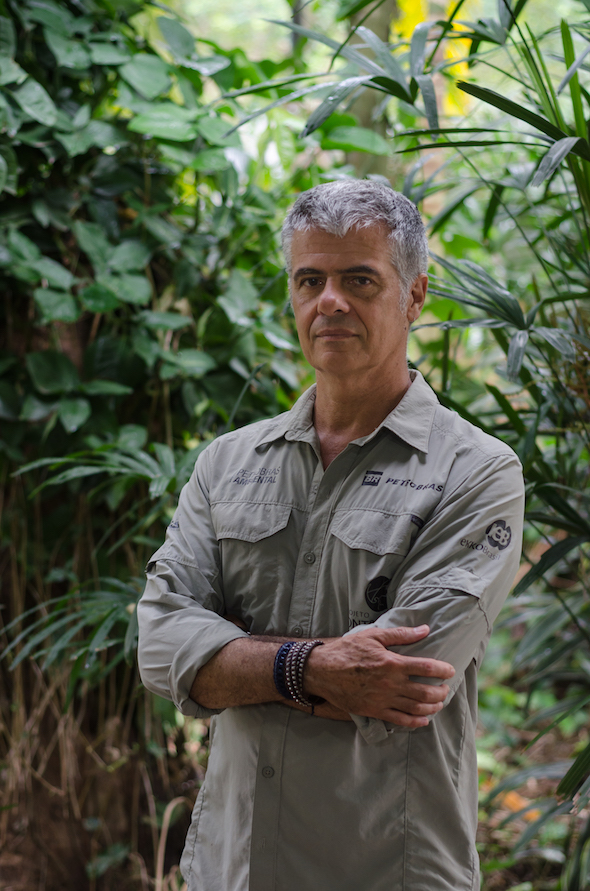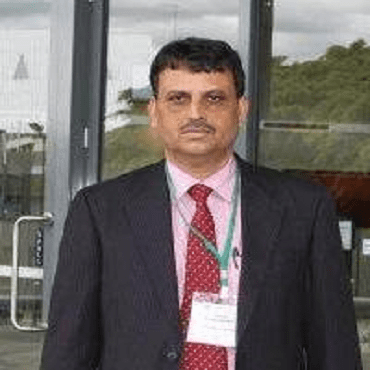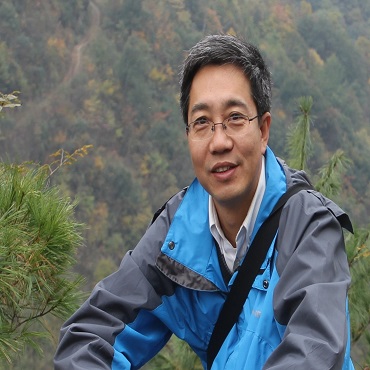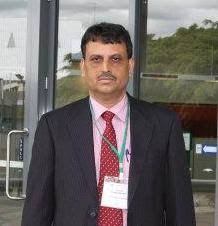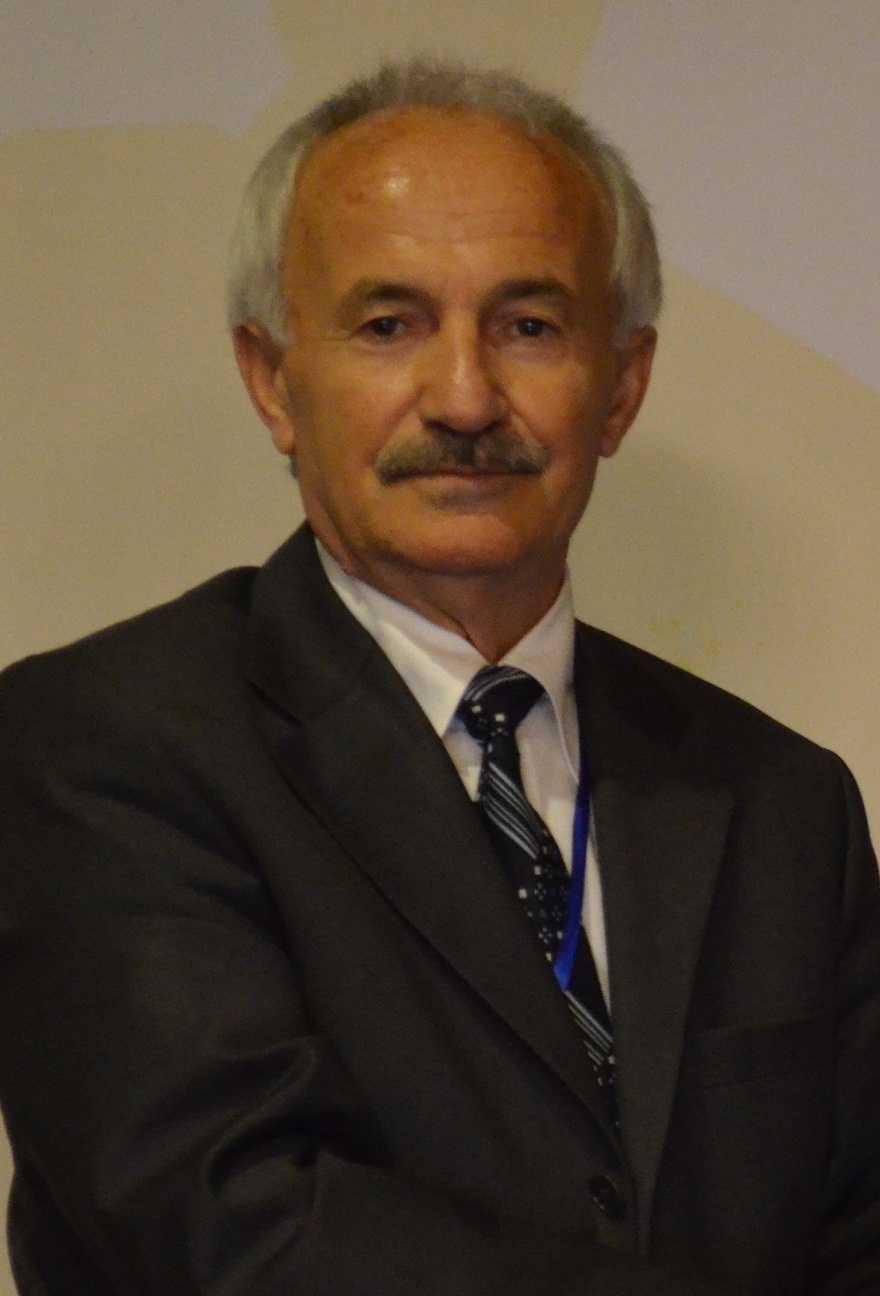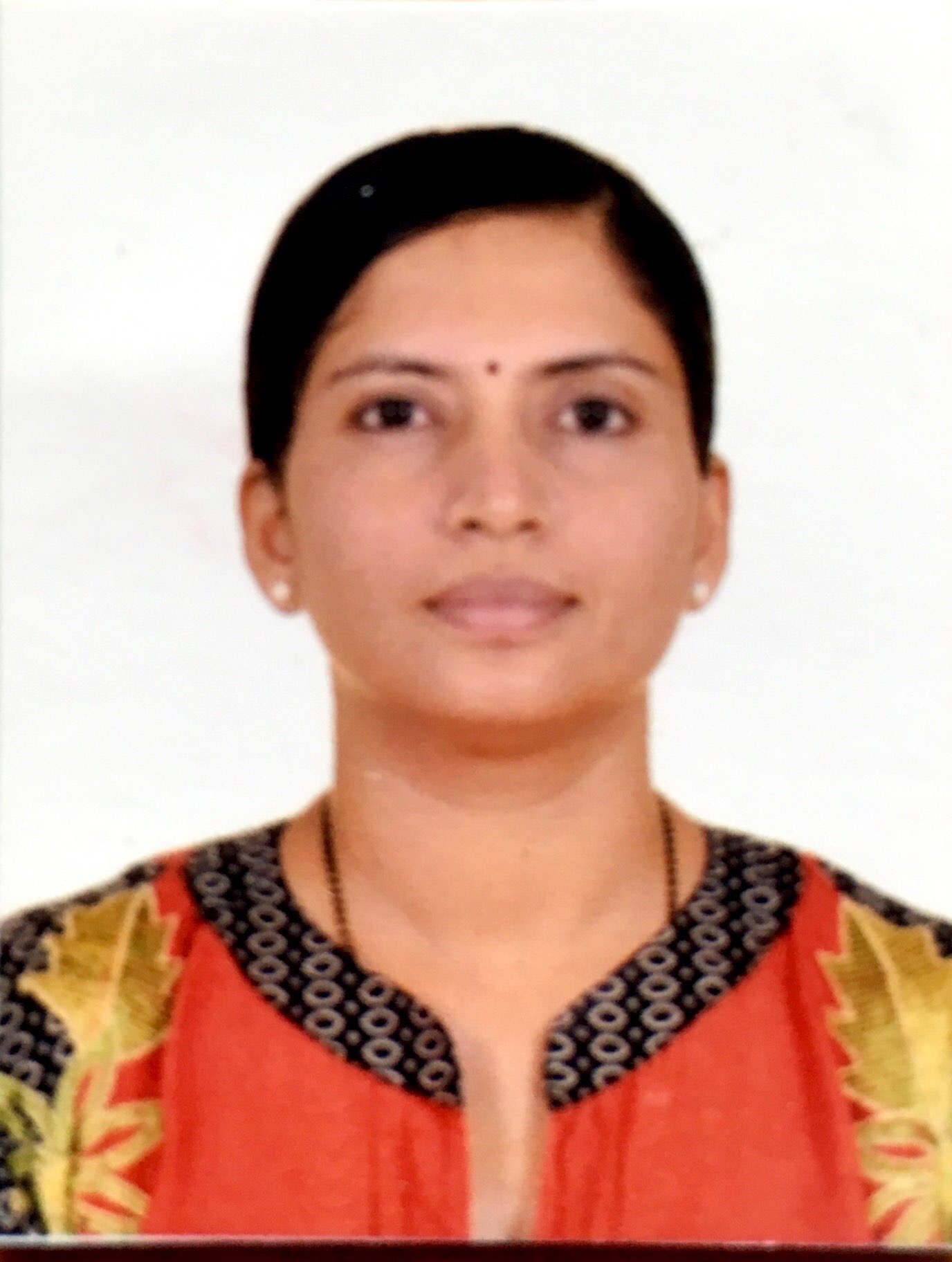Scientific Program
Keynote Session:
Title: Biochar utilization: Emerging technology for improving soil productivity and mine spoils remediation
Biography:
Gilbert C. Sigua is a Research Soil Scientist at the USDA-ARS Coastal Plains Soil, Water, and Plant Research Center in Florence, South Carolina, USA. His research program focuses on both the short-term and long-term solutions to enhancing agricultural and environmental sustainability and improving water and nutrient management in humid region. Gilbert is a nationally and internationally recognized expert and authority in his field because of his work on agricultural, ecological, and environmental management research as evidenced by his various international projects in Brazil, Australia, Philippines, Japan and Cambodia. Dr. Sigua’s scholarly achievements and expertise have been widely recognized through numerous honors and awards. As a testimony to this, he was recently awarded major fellowship awards, to wit: (a) Fellow of American Society of Agronomy; (b) Fulbright Fellow; (c) Japan Society for Promotion of Science Fellow; (d) DOST “Balik Scientist” Fellow; and (e) Fellow of Soil Science Society of America.
Abstract:
Recycling and using raw materials from the waste we generate are some of the environmental challenge that we face today. Promotion of innovative and appropriate technologies is necessary to achieve sound and sustainable natural resources management. Biochar production using pyrolysis technology can utilize most urban, agricultural or forestry biomass residues, including wood chips, corn stover, rice or peanut hulls, tree bark, paper mill sludge, animal manure, and many other recycled organics for improving soil quality and soil remediation. Biochars as specialized soil amendments can provide multifunctional roles with remarkable agronomic and environmental significance. The use of biochar and other organic amendments for mine spoil remediation are still unclear. Phytostabilization can be enhanced by using soil amendments like biochars that immobilize metal(loid)s when combined with plant species that are tolerant of high levels of contaminants. Our biochars studies demonstrated the favorable and beneficial effects of different designer biochars on soil productivity and phytostabilization of heavy metals in contaminated mine spoils. Application of 80:20 blends of pine chips and poultry litters was found to be superior over other blends of biochars because of its favorable effects on soil and biomass productivity and nutrient uptake of winter wheat. Our research investigations have also confirmed that biochars have binding mechanisms to sequester metals. Recently, biochars ability to sequester metals has caught the attention of the mine reclamation sector. It is proposed that biochar is a suitable amendment to remediate heavy metals in mine spoils, as well as improve chemical conditions for enhanced plant growth. Better plant growth will improve phytostabilization, increase containment of metal-laden sediment, while also reducing potential metal uptake by plants. As such, utilization of a biochar with appropriate chemical and physical characteristics is crucial for effective binding of heavy metals while also improving plant growth conditions in the mine spoils.
Title: Aquatic plant systems for sustainable wastewater treatment: Indian case studies
Biography:
Goutam Banerjee is specialized in environmental engineering and sanitation with civil engineering background. He has been engaged in research and field evaluation on low-cost wastewater treatment systems for about last two decades. His research is primarily focused on tertiary treatment of conventionally treated wastewater of municipal origin for appropriate reuses in Indian context. For doing so, he has been actively engaged in biological as well as non-biological treatment of wastewaters for rendering them fit for different applications such as irrigation, industrial, groundwater recharging, and domestic consumption in sustainable ways.
Abstract:
There is a growing concern world-wide now for not allowing waste discharges into natural water bodies as it might lead to ecological imbalance and may affect adversely aquatic lives, and thus it has become imperative that discharging wastes into such natural water bodies must now meet regulatory requirements and is mostly being discouraged. This aspect has given rise the need to construct artificial ecosystems as a functional part of waste water treatment. Such artificial systems mimic natural systems but without the constraint associated with natural water bodies.
Duckweeds belong to the family Lemnaceae (3 species) and are floating aquatic flowering plants found throughout the world and as stated above, flourish in a variety of climates. Reduction of BOD, COD, TSS, nitrogen, phosphorus, arsenic, and Coliforms and heavy metals are reported to be remarkable in duckweed ponds.
Furthermore, the growth of duckweed is so rapid that harvesting would result in revenue earning by generating biogas or selling as fish, animal or poultry feed. The density of plant species in the respective ponds was found, when fully grown, to be in the range of 0.8 – 1.1 Kg/m2 for duckweeds and 1.8 – 2.3 Kg/m2 for salvinia species. The harvestable fraction of both the species are about 10% of the total biomass in the pond, which amounts to about 0.08 – 0.11 Kg/m2/day for duckweeds and 0.20 – 0.23 Kg/m2/day in case of salvinia species.
The combined average removals of BOD5, COD, TSS, NH4+-N, Phosphorus (as PO4--P), Arsenic and Faecal coliforms (FC) in Salvinia and Duckweed ponds with a total detention time of 12 days (5.3 days in Salvinia pond followed by 6.7 days in Duckweed pond, when the ponds are in series, excepting 6 days of overall detention time for arsenic removals,) were found to be 73.15%, 62.9%, 88.0%, 84.5%, 58.2%, 63.6% (6-d detention), and above 99.99%, respectively.
Title: Research center on Metagenomics and Bioprospecting in the cerrado biome (RCMB)
Biography:
Divaldo Rezende is an accomplished Senior Executive and Consultant with more than 30 years of success across the environmental services, energy, and financial services industries. Throughout his executive career, Mr. Rezende has held leadership positions at companies including Ecologica Institute, Ecologica ID, and CantorCO2e Brazil. As Executive Director & VP of Ecologica Institute since July 2017, he has raised more than $100M for social and environmental projects in the Amazon region of Brazil, spearheaded forestation of more than 1,000 acres in the Amazon rain forest, and is working on several projects to help improve environmental issues and climate change mitigation. He previously served for two years as Secretary of State for Environmental and Sustainable Development with Tocantins State for two years. He earlier spent four years as Managing Director of CantorCO2e Brazil, helping companies in principal emissions markets with financial services. This was preceded by five prior years as President of Ecologica Institute, after he founded the organization in 2000. He also served as a Consultant to the United Nations from 2000 to 2013, working on programs in sustainable development.
Abstract:
Most of the biomass present in the planet is in the form of microorganisms. Recent molecular studies indicate that 1 g of soil may contain about 10 billion cells and thousands of microbial species. The discovery that the vast majority of these microorganisms are not cultivable (<1%) stimulated the development of technologies for culture-independent molecular studies (metagenomics). Currently, metagenomics arises as the main method of biotechnological search for new genes, enzymes and bioactive drugs. Metagenomics-based bioprospecting activity and the discovery of new substances of industrial interest have stimulated huge investments in research and the creation of several biotechnology companies worldwide. Large pharmaceutical companies, for instance, often hire small and medium enterprises to bioprospect for new molecules and to do the initial screening for potentially valuable products. The South Amazon Ecotone is located at the contact region between the Cerrado and the Amazon forest, and is commonly defined as the Amazonian savannas. The climate and geological characteristics of this region enable the development of a complex and sensitive biotic system and high level of endemism. This system depends on microorganisms to maintain the essential ecological processes. In general, the various interactions that occur between microorganisms and the environment (e.g. nutrient cycling) and other macro-organisms (e.g. symbionts) are considered essential to maintaining the health of ecosystems. Studies conducted at the beginning of this millennium, indicate that the Brazilian Cerrado belongs to the group of 25 “hotspots”recognized as the main centers of biodiversity in the world. The environmental conditions that enable the development of ecotone unique gene pools probably hold immeasurable potential for biotechnology. However, the biotechnological potential associated with this diversity is still mostly unknown as the Amazonian savannas have been poorly studied. This project proposes the creation of a research Center for Metagenomics and Bioprospecting in Cerrado (RCMB). Its main task will be to promote the bio-entrepreneurship, study, conservation and sustainable management of the Cerrado and its transition ecosystems.
Title: Illegal, unreported and unregulated (IUU) fishing and the impact on small coastal communities in Africa & our experience in the Galapagos Islands
Biography:
Captain Cornelissen has participated in more than 25 Sea Shepherd campaigns, including five trips down to the Antarctic to stop the Japanese whale poachers. He first joined Sea Shepherd in 2002. On his first day on board the Farley Mowat, he dove into the waters of the Galapagos Marine Reserve to save a turtle from a long line. Even though such an initiation seems hard to beat, he has since had many inspirational moments. Saving 15 dolphins from the nets in Taiji in 2003. Saving seals in Canada in 2005 and 2008, campaigns that are by far the bloodiest and most brutal to witness. Over 14 years he served as a member of the Sea Shepherd crew on a number of ships in Sea Shepherds fleet, working his way up to the bridge to become the First Officer under Captain Paul Watson and appointed Captain in 2006. He served nonstop on board the ships until the end of 2007 when he started working as the Director of Operations in the Galapagos Islands. Here he remained for seven years, running an effective campaign to stop poaching in the Galapagos Marine Reserve. In January 2014, Captain Cornelissen became the CEO of Sea Shepherd Global. Captain Cornelissen is the president of the board of directors for Sea Shepherd Germany, Luxemburg, Netherlands and Switzerland and serves as a board member in most of the other established Sea Shepherd countries. Captain Cornelissen gives presentations around the world to highlight the important work of the Sea Shepherd movement and to inspire others to join the fight.
Abstract:
Sea Shepherd Global has been cooperating with the governments of Liberia, Gabon, Sao Tome and Tanzania to target Illegal, Unreported and Unregulated (IUU) fishing in their waters. Foreign fishing fleets are causing massive damages to local fish populations and local artisanal fishermen are reporting ever declining catches, putting their food security at risk. Over the past two years, these cooperation’s have resulted in the arrest of over 50 vessels and for the first time in decades local catches are increasing again. Since 2000 Sea Shepherd has been working with the Ecuadorian authorities to provide support in order to protect the Galapagos Marine Reserve (GMR). Our work has focussed primarily to combat illegal fishing and wildlife smuggling. It ranges from providing ships and materials; the building of an Automatic Identification System (AIS) to monitor all vessel movement to the selection and training of a specialised police dog unit that is able to detect wildlife smuggling. We work together with the Galapagos National Park Service and the Ecuadorian National Police to protect this World Heritage Site.
Title: Biodiversity as an economic value for the protection of ecosystems
Biography:
Oldemar Carvalho Junior, oceanographer, has his expertise in Neotropical otters, energetic modeling and physics of the environment. He is responsible for implementing the first and only Latin America Scientific Breeding for Research of the Mustelidae family. Over the past 10 years, he has worked with animal research in captivity and in the wild, in two major Brazilian biomes the Coastal Zone of Atlantic Forest and the Pantanal. Due to the excellent results obtained he was invited to coordinate the Neotropical Otter Sub-group in Latin America by the IUCN (The International Union for Conservation of Nature). During his professional and academic career, he has received some awards such as the Professional Talent in 2012, Expression in Ecology in 2008 and he was appointed to the Brazilian Immortal Prize.
Abstract:
Title: Intraspecific trait variation improves species response to neighborhood crowding and abiotic factors
Biography:
Zhanqing Hao focused on the biodiversity and ecological functions. As one of the Chinese scientists who participated in biodiversity research, he initiated the establishment of 25ha temperate permanent monitoring forest plot in Northeast China in 2004, which is the earliest temperate forest plot in china and had been an important member of Chinese Forest Biodiversity Monitoring Network (CForBio). After that, a series of forest plots had been established along successional stages and latitude gradients. All those forest plot provided great opportunity to detect the biodiversity patterns and maintaining mechanisms in temperate forests.
Abstract:
Intraspecific trait variation (ITV) can play an important role in community assembly and the maintenance of biodiversity. However, fundamental gaps remain in our understanding of how ITV affect species dynamics and mediate species response to biotic and abiotic constrains. We developed a hierarchical Bayesian neighborhood modeling approach to quantify the simultaneous effects of climate factors and crowding by neighbors on the survival 97 tropical tree species located in eleven 0.5-1ha plots of temperate forest in northeast China. We build multi-level regression models to evaluate how key leaf functional traits mediate tree survival response to climate factors and neighborhood crowding. Specifically, we contrasted results from mean and habitat specialized trait values. With the increase of the annual minimum temperature, the survival rate of trees increased, suggesting that low temperature stress can significantly inhibit tree survival. However, water stress has no significant impact on tree survival. Trees had higher survival when the heterogenetic neighborhood increased, while conspecific neighborhood had no influence on tree survival. Species with high leaf area and high leaf nitrogen content had lower survival rates, while species with high leaf carbon isotope content and high leaf carbon content had higher survival rates. The species with higher leaf carbon stable isotope were not sensitive to the promotion effect of heterogenetic neighborhood, while the species with larger area was not sensitive to the inhibition of low temperature. In addition, considering intraspecific trait variation can significantly improve the predictive ability of functional traits and more accurately reflect the response of trees to neighborhood composition and abiotic factors.
Title: Biodiversity of beneficial arthropods in tropical tuber crops ecosystem in India
Biography:
MS Palaniswami is a Research Advisory Member of the ICAR – Sugarcane Breeding Institute and Central Potato Research Institute and is the Chief Editor of the journal “ENTOMON” by the Association for Advancement of Entomology, Kerala Agricultural University, India. Served as the Head, Division of Crop Protection and as National Project Co-ordinator (Tuber Crops). He has officiated as in charge/Acting Director, CTCRI. USDA/ USIF, NATP and AP Cess Fund projects yielded commendable output. The USDA, Washington awarded special appreciation certificate. The contribution to biocontrol agents, sex pheromone and kairomone of Cylas formicarius F. and biotypes and biocontrol agents of Bemisia tabaci G. are noteworthy. Received the Chaudhary Devi Lal Outstanding AICRP Award 2007 from the ICAR. Authored six books, 25 chapters and170 publications in journals. Guided scholars for doctoral, Post- Doctoral and MSc and one of his students received Jawaharlal Nehru Award for the outstanding research doctoral thesis – 2006. Distinguished Service Award – 2015 from the Association for the Advancement of Biodiversity Science. ICAR - AICRPTC Golden jubilee award 2018 for valuable contributions
Abstract:
Tropical tuber crops play an important role in catering the food needs especially in the context of burgeoning population. Sweet potato, cassava, elephant foot yam, taro and yams are major tropical tuber crops. Many insects and mites are associated with these crops either as pests causing economic damage or as beneficial ones as natural bio-control agents. More than 150 species of insect and mite infest these crops andimportant are - sweet potato weevil and vine borer damaging vines and tubers; cassava scale insects, mites, mealy bugs and whiteflies causing defoliation; aphids, mealy bugs and caterpillars on taro & elephant foot yam, and scale insects and leaf feeders on yams. Major natural enemies of sweet potato weevil Cylas formicarius are - ectoparasitoids - Rhaconotus menippus N., Bracon sp., Pachybracon sp. & Spathius dido N. and predators - Tetramorium smithi, Tetramorium bicarinatum (Ny), Monomorium destructor (J), M. pharaones, Solenopsis geminate and Euborellia stali D. Many more parasitoids and predators are also reported as beneficial arthropods of sweet potato pests. Cassava scale Aonidomytilus albus (C) infests stems, shoots and even sometimes leaf petioles and leaf undersides. Scale insects brown scale Saissetia nigra, Saissetia coffeae (W), Parasaissetia nigra N. and Lepidosaphes sp also infest cassava. Larvae and adults of coccenellids – Chilocorus nigritus F. Syemnus quimeti Muls., Chilomenus sexmaculatus F. and Stethorus pariepunctatus Kapur prey on the scales. As many as 50 natural enemies are known to attack the whiteflies in different locations. Aphelimid parasitoids often regulate the field population of whitefly up to 12.1%. Parasitoids recorded on B. tabaci include Encarsia transvena (Tim), E. bimacualata (H&Po), E. nigriphala (Do), E. strenua (S), E. haitiensis (Do), E. guadeloupe (V), E. azimi (Ha), E. pergandiella (Ho), Eretmocerus mundus (Mer) and Eretmocerus sp. On spiraling whitefly, Encarsia quadeloupae V and E. haitiensis are important. Predators mostly generalists and few host specific have been recorded in India. The major predators are coccinellids and chrysopids. Among the coccinellids, Anegleis cardoni (We), Anegleis perrotteti (Mu), Axinoscymnus puttarudriahi Ka & Mu, Cheilomenes sexmaculata (F), Jauravia spp. and Cryptolaemus montrouzieri Mu are common. Mealybug - Paracoccus marginatus is known to attack many crops including cassava and Acerophagus papaya parasitoid play an important role in its management. Madeira mealybug - Phenacoccus madeirensis damage cassava in parts of Karnataka and the parasitoids noted are Allotropa sp., Anagyrus sinope, Anagyrus quadrii and Anagyrus loeckii. Biotic agents of spidermites include Coccenellids- Pharoscymnus hornii Weise, Stethorus gilvifrons Muls., thrips – Scolothrips indicus P. and phytoseiid mites – Amblyseius longispinosus Evans. Aphids - Aphis gossypii Glov and Pentalonia nigronervosa Coq., infest aroids. Aphelinus mali H., Aphelinus sp., Coccophagus cowperi Gir. and Aphidencyrtus aphidivorus May. are parasitoids on aphids. Aphidophagous predators are Menochilus sexmaculatus F., Verania discolor F., Pseudospidimerus circumflexus Mots., V. inops Muls., Ischiodon scutellaris F. and spiders. Aspidiella hartii is a key pest of Yam (Dioscorea Spp.) in field and storage. Two parasitoids Adelencyrtus moderatus H. and Physcus comperi H often regulate pest population. Beneficial arthropods found in these crops are largely the natural enemies of the insect and mite pests. Natural enemies are indispensable mortality factors operating in any ecosystem. Conservation and utilization of indigenous parasitoids and predators are paramount necessity and can provide a long term sustainable ecologically safe pest management.
Title: Ecodegradation & Ecorestoration : Coastal mangrove ecosystem , west Bengal, India
Biography:
Susanta Kumar Chakraborty, Professor of Zoology, Vidyasagar University, born on 31st July, 1960, has been in active research since 1982 after completion of his M.Sc. in Zoology from the Calcutta University .His research preferences centre around on the subjects like ecology, coastal, mangrove, fresh water wetlands, rivers and estuaries, with an emphasis on biodiversity and ecosystem dynamics. He has been also associated with action research on the Integration of rural biotechnologies for the environmental management, ecorestoration and livelihood generation. He did his M. Phil. in Environmental Science and Ph.D. in marine science from the Calcutta University in the years 1984 and 1992 respectively. He has been imparting teaching spanning a period of three decades mostly in the postgraduate level covering different aspects of zoology in general and ecology/environmental science in particular.
Abstract:
Ecodegradation (deteoration of environmental qualities) and Ecorestoration(return of an ecodegraded ecosystem to a close approximation of its condition prior to disturbation) represent two contrasting ecological terms dealing with eco-management of any ecosystem of the world. Ecorestoration being a multidimensional activity involve all major hierarchial levels of ecological organizations from species to entire ecosystem. Coastal- mangrove ecosystem representing the most productive and dynamic ecosystem of the world, supports innumerable number of flora and fauna in its diversified habitats and ecological niches. A comprehensive decadal study on biodiversity and environmental characteristics (water and soil qualities) of three different selected study sites located on different estuarine networks viz. Matla, Saptamukhi and Hooghly on eastern, central and western regions, of Sundarbans Mangrove Ecosystem, India, a World Heritage Site, was conducted.A total of 39 species of true mangroves,23 genera of phytoplankton, 42 species of zooplankton, 18 families of ichthyoplankton, 79 species of macrobenthos , and diversified forms of fishes, reptiles, birds and mammals have been recorded. However, different human centric developmental activities (industrialization, urbanization ,ecotourism etc.) have contributed a lot towards the large scale ecodegradation coupled with loss of biodiversity in this sensitive, vulnerable and productive ecosystems of the world.
In such context, the present paper will highlight 4 fold of objectives—1) Assessment of existing biodiversity , ecological services and trend of changes during last two decades; 2) Identification of causative factors(Threats -sources and characteristics) leading to ecodegradation and biodiversity loss; 3) Evaluation of already undertaken eco-restoration efforts and their impact in the present studied environment (Biodiversity and their habitats) 4) Chalking out restoration strategies adhering to the underlying ecological principles.
Oral Session 1:
- Biodiversity and Ecology | Marine and Coastal Biodiversity

Chair
Jerome Partos
European Environmental Bureau, Belgium

Co-Chair
Goutam Kumar Banerjee
Indian Institute of Technology, India
Title: Using native biodiversity to restore metal-polluted soil in tropical Africa: A case study in the copper belt of Katanga (DR Congo)
Biography:
Pierre Meets is full professor at the University of Brussels. There he teaches general botany and ecology.He is head of the African herbarium of the University of Brussels and scientific director of the Botanic Garden Jean Massart (Brussels). His research focuses on evolution and adaptation of plants to soil factors, in particular trace metal elements. He has developed development cooperation activities in central Africa (DR Congo) for 15 years. He launched the first in situ trials of phytoremediation of copper-contaminated soil in tropical Africa.
Abstract:
In Katanga (D.R. Congo), a long history of mining activities has contaminated soils with heavy metals over very large areas. This represents a major concern to sustainable development and human health. Ecological restoration of those areas is challenging. The speech will present the results of a cooperation development project with the Faculty of Agronomic Sciences of the University of Lubumbashi, focused on the restoration of soil polluted by the metallurgical industry. The most original ecosystems in Katanga are the so-called "copper hills" i.e. natural outcrops of bedrock enriched in copper and cobalt. The natural vegetation of copper hills is surprisingly rich and diversified. The project developed applied ecological research in copper hills and ex situ i.e. in a botanic garden created for the occasion. A number of “metallophytes” have been screened for heavy metal tolerance and accumulation and for other traits of interest. One species has emerged as a good candidate and has been successfully domesticated in the botanic garden. The first in situ “phytostabilisation” trials have been installed in the area contaminated by atmospheric fallout downwind the copper smelter of Lubumbashi. Establishment, growth and survival have been monitored for 5 years. The results show that Katangan metallophytes exhibit extraordinary ecophysiological properties which are still poorly understood. They represent unique biological resources to ecological restoration of metal-polluted soils in tropical regions. The conservation of those resources must be explicitly considered in ongoing and future mining projects in Katanga.
Title: Illegal, unreported and unregulated (IUU) fishing and the impact on small coastal communities in Africa & our experience in the Galapagos Islands
Biography:
Captain Cornelissen has participated in more than 25 Sea Shepherd campaigns, including five trips down to the Antarctic to stop the Japanese whale poachers. He first joined Sea Shepherd in 2002. On his first day on board the Farley Mowat, he dove into the waters of the Galapagos Marine Reserve to save a turtle from a long line. Even though such an initiation seems hard to beat, he has since had many inspirational moments. Saving 15 dolphins from the nets in Taiji in 2003. Saving seals in Canada in 2005 and 2008, campaigns that are by far the bloodiest and most brutal to witness. Over 14 years he served as a member of the Sea Shepherd crew on a number of ships in Sea Shepherds fleet, working his way up to the bridge to become the First Officer under Captain Paul Watson and appointed Captain in 2006. He served nonstop on board the ships until the end of 2007 when he started working as the Director of Operations in the Galapagos Islands. Here he remained for seven years, running an effective campaign to stop poaching in the Galapagos Marine Reserve. In January 2014, Captain Cornelissen became the CEO of Sea Shepherd Global. Captain Cornelissen is the president of the board of directors for Sea Shepherd Germany, Luxemburg, Netherlands and Switzerland and serves as a board member in most of the other established Sea Shepherd countries. Captain Cornelissen gives presentations around the world to highlight the important work of the Sea Shepherd movement and to inspire others to join the fight.
Abstract:
Sea Shepherd Global has been cooperating with the governments of Liberia, Gabon, Sao Tome and Tanzania to target illegal, unreported and unregulated (IUU) fishing in their waters. Foreign fishing fleets are causing massive damages to local fish populations and local artisanal fishermen are reporting ever declining catches, putting their food security at risk. Over the past two years, these cooperation’s have resulted in the arrest of over 50 vessels and for the first time in decades local catches are increasing again. Since 2000 Sea Shepherd has been working with the Ecuadorian authorities to provide support in order to protect the Galapagos Marine Reserve (GMR). Our work has focussed primarily to combat illegal fishing and wildlife smuggling. It ranges from providing ships and materials; the building of an Automatic Identification System (AIS) to monitor all vessel movement to the selection and training of a specialised police dog unit that is able to detect wildlife smuggling. We work together with the Galapagos National Park Service and the Ecuadorian National Police to protect this World Heritage Site.
Title: Biodiversity as an economic value for the protection of ecosystems
Biography:
Oldemar Carvalho Junior, oceanographer, has his expertise in Neotropical otters, energetic modeling and physics of the environment. He is responsible for implementing the first and only Latin America Scientific Breeding for Research of the Mustelidae family. Over the past 10 years, he has worked with animal research in captivity and in the wild, in two major Brazilian biomes the Coastal Zone of Atlantic Forest and the Pantanal. Due to the excellent results obtained he was invited to coordinate the Neotropical Otter Sub-group in Latin America by the IUCN (The International Union for Conservation of Nature). During his professional and academic career, he has received some awards such as the Professional Talent in 2012, Expression in Ecology in 2008 and he was appointed to the Brazilian Immortal Prize.
Abstract:
Statement of the problem: The preservation of ecosystems requires a significant demand for resources, such as personal, financial and infrastructure, which are increasingly difficult to justify due to lack of sustainability and restrictions of use. Tourism could be a good response, however, while goods and services that support visitation are relatively easy to account, other less tangible environmental services, such as biodiversity, can be difficult to be valued. To evaluate these assets is important in order to take the best decisions for ecosystem management. In this work emergy is applied to evaluate the natural capital, in a conservation area in the south of Brazil. The objective is to be able to predict the economic and environmental viability of the study area for a conservation tourism proposal. Methodology & Theoretical Orientation: To place the value of biodiversity in perspective, emergy synthesis of the main storages and ecological processes in the study area are calculated. For the evaluation of renewable inputs to the Peri Lake, solar energy, rainfall, runoff, and wind annual averages are used. Findings: The highest value is recorded for biodiversity ($354 billion), shrub and herbaceous vegetation represents $14 billion emdollars, tree biomass $5.7 billion emdollars, and water extracted for supply $12,4 thousand emdollars. Conclusion & Significance: Biodiversity clearly dominates the environmental assets of the study area. Biodiversity represents the information of the ecosystem reflected in the diversity of the species. It also results in a large input of grants from sponsors, driving most of the research in the area. These results show that the local government strategy, focused only on water extraction is not a good one. Tourism conservation based on natural assets, for example, could be much more attractive.
Title: Intraspecific trait variation improves species response to neighborhood crowding and abiotic factors
Biography:
Zhanqing Hao focused on the biodiversity and ecological functions. As one of the Chinese scientists who participated in biodiversity research, he initiated the establishment of 25ha temperate permanent monitoring forest plot in Northeast China in 2004, which is the earliest temperate forest plot in china and had been an important member of Chinese Forest Biodiversity Monitoring Network (CForBio). After that, a series of forest plots had been established along successional stages and latitude gradients. All those forest plot provided great opportunity to detect the biodiversity patterns and maintaining mechanisms in temperate forests.
Abstract:
Intraspecific trait variation (ITV) can play an important role in community assembly and the maintenance of biodiversity. However, fundamental gaps remain in our understanding of how ITV affect species dynamics and mediate species response to biotic and abiotic constrains. We developed a hierarchical Bayesian neighborhood modeling approach to quantify the simultaneous effects of climate factors and crowding by neighbors on the survival 97 tropical tree species located in eleven 0.5-1ha plots of temperate forest in northeast China. We build multi-level regression models to evaluate how key leaf functional traits mediate tree survival response to climate factors and neighborhood crowding. Specifically, we contrasted results from mean and habitat specialized trait values. With the increase of the annual minimum temperature, the survival rate of trees increased, suggesting that low temperature stress can significantly inhibit tree survival. However, water stress has no significant impact on tree survival. Trees had higher survival when the heterogenetic neighborhood increased, while conspecific neighborhood had no influence on tree survival. Species with high leaf area and high leaf nitrogen content had lower survival rates, while species with high leaf carbon isotope content and high leaf carbon content had higher survival rates. The species with higher leaf carbon stable isotope were not sensitive to the promotion effect of heterogenetic neighborhood, while the species with larger area was not sensitive to the inhibition of low temperature. In addition, considering intraspecific trait variation can significantly improve the predictive ability of functional traits and more accurately reflect the response of trees to neighborhood composition and abiotic factors.
Title: Biodiversity of beneficial arthropods in tropical tuber crops ecosystem in India
Biography:
MS Palaniswami is a Research Advisory Member of the ICAR – Sugarcane Breeding Institute and Central Potato Research Institute and is the Chief Editor of the journal “ENTOMON” by the Association for Advancement of Entomology, Kerala Agricultural University, India. Served as the Head, Division of Crop Protection and as National Project Co-ordinator (Tuber Crops). He has officiated as in charge/Acting Director, CTCRI. USDA/ USIF, NATP and AP Cess Fund projects yielded commendable output. The USDA, Washington awarded special appreciation certificate. The contribution to biocontrol agents, sex pheromone and kairomone of Cylas formicarius F. and biotypes and biocontrol agents of Bemisia tabaci G. are noteworthy. Received the Chaudhary Devi Lal Outstanding AICRP Award 2007 from the ICAR. Authored six books, 25 chapters and170 publications in journals. Guided scholars for doctoral, Post- Doctoral and MSc and one of his students received Jawaharlal Nehru Award for the outstanding research doctoral thesis – 2006. Distinguished Service Award – 2015 from the Association for the Advancement of Biodiversity Science. ICAR - AICRPTC Golden jubilee award 2018 for valuable contributions
Abstract:
Tropical tuber crops play an important role in catering the food needs especially in the context of burgeoning population. Sweet potato, cassava, elephant foot yam, taro and yams are major tropical tuber crops. Many insects and mites are associated with these crops either as pests causing economic damage or as beneficial ones as natural bio-control agents. More than 150 species of insect and mite infest these crops andimportant are - sweet potato weevil and vine borer damaging vines and tubers; cassava scale insects, mites, mealy bugs and whiteflies causing defoliation; aphids, mealy bugs and caterpillars on taro & elephant foot yam, and scale insects and leaf feeders on yams. Major natural enemies of sweet potato weevil Cylas formicarius are - ectoparasitoids - Rhaconotus menippus N., Bracon sp., Pachybracon sp. & Spathius dido N. and predators - Tetramorium smithi, Tetramorium bicarinatum (Ny), Monomorium destructor (J), M. pharaones, Solenopsis geminate and Euborellia stali D. Many more parasitoids and predators are also reported as beneficial arthropods of sweet potato pests. Cassava scale Aonidomytilus albus (C) infests stems, shoots and even sometimes leaf petioles and leaf undersides. Scale insects brown scale Saissetia nigra, Saissetia coffeae (W), Parasaissetia nigra N. and Lepidosaphes sp also infest cassava. Larvae and adults of coccenellids – Chilocorus nigritus F. Syemnus quimeti Muls., Chilomenus sexmaculatus F. and Stethorus pariepunctatus Kapur prey on the scales. As many as 50 natural enemies are known to attack the whiteflies in different locations. Aphelimid parasitoids often regulate the field population of whitefly up to 12.1%. Parasitoids recorded on B. tabaci include Encarsia transvena (Tim), E. bimacualata (H&Po), E. nigriphala (Do), E. strenua (S), E. haitiensis (Do), E. guadeloupe (V), E. azimi (Ha), E. pergandiella (Ho), Eretmocerus mundus (Mer) and Eretmocerus sp. On spiraling whitefly, Encarsia quadeloupae V and E. haitiensis are important. Predators mostly generalists and few host specific have been recorded in India. The major predators are coccinellids and chrysopids. Among the coccinellids, Anegleis cardoni (We), Anegleis perrotteti (Mu), Axinoscymnus puttarudriahi Ka & Mu, Cheilomenes sexmaculata (F), Jauravia spp. and Cryptolaemus montrouzieri Mu are common. Mealybug - Paracoccus marginatus is known to attack many crops including cassava and Acerophagus papaya parasitoid play an important role in its management. Madeira mealybug - Phenacoccus madeirensis damage cassava in parts of Karnataka and the parasitoids noted are Allotropa sp., Anagyrus sinope, Anagyrus quadrii and Anagyrus loeckii. Biotic agents of spidermites include Coccenellids- Pharoscymnus hornii Weise, Stethorus gilvifrons Muls., thrips – Scolothrips indicus P. and phytoseiid mites – Amblyseius longispinosus Evans. Aphids - Aphis gossypii Glov and Pentalonia nigronervosa Coq., infest aroids. Aphelinus mali H., Aphelinus sp., Coccophagus cowperi Gir. and Aphidencyrtus aphidivorus May. are parasitoids on aphids. Aphidophagous predators are Menochilus sexmaculatus F., Verania discolor F., Pseudospidimerus circumflexus Mots., V. inops Muls., Ischiodon scutellaris F. and spiders. Aspidiella hartii is a key pest of Yam (Dioscorea Spp.) in field and storage. Two parasitoids Adelencyrtus moderatus H. and Physcus comperi H often regulate pest population. Beneficial arthropods found in these crops are largely the natural enemies of the insect and mite pests. Natural enemies are indispensable mortality factors operating in any ecosystem. Conservation and utilization of indigenous parasitoids and predators are paramount necessity and can provide a long term sustainable ecologically safe pest management.
Title: Ecodegradation & Ecorestoration : Coastal mangrove ecosystem, West Bengal, India
Biography:
Susanta Kumar Chakraborty, Professor of Zoology, Vidyasagar University, born on 31st July, 1960, has been in active research since 1982 after completion of his M.Sc. in Zoology from the Calcutta University .His research preferences centre around on the subjects like ecology, coastal, mangrove, fresh water wetlands, rivers and estuaries, with an emphasis on biodiversity and ecosystem dynamics. He has been also associated with action research on the Integration of rural biotechnologies for the environmental management, ecorestoration and livelihood generation. He did his M. Phil. in Environmental Science and Ph.D. in marine science from the Calcutta University in the years 1984 and 1992 respectively. He has been imparting teaching spanning a period of three decades mostly in the postgraduate level covering different aspects of zoology in general and ecology/environmental science in particular.
Abstract:
Ecodegradation (deteoration of environmental qualities) and Ecorestoration(return of an ecodegraded ecosystem to a close approximation of its condition prior to disturbation) represent two contrasting ecological terms dealing with eco-management of any ecosystem of the world. Ecorestoration being a multidimensional activity involve all major hierarchial levels of ecological organizations from species to entire ecosystem. Coastal- mangrove ecosystem representing the most productive and dynamic ecosystem of the world, supports innumerable number of flora and fauna in its diversified habitats and ecological niches. A comprehensive decadal study on biodiversity and environmental characteristics (water and soil qualities) of three different selected study sites located on different estuarine networks viz. Matla, Saptamukhi and Hooghly on eastern, central and western regions, of Sundarbans Mangrove Ecosystem, India, a World Heritage Site, was conducted.A total of 39 species of true mangroves,23 genera of phytoplankton, 42 species of zooplankton, 18 families of ichthyoplankton, 79 species of macrobenthos , and diversified forms of fishes, reptiles, birds and mammals have been recorded. However, different human centric developmental activities (industrialization, urbanization ,ecotourism etc.) have contributed a lot towards the large scale ecodegradation coupled with loss of biodiversity in this sensitive, vulnerable and productive ecosystems of the world.
In such context, the present paper will highlight 4 fold of objectives—1) Assessment of existing biodiversity , ecological services and trend of changes during last two decades; 2) Identification of causative factors(Threats -sources and characteristics) leading to ecodegradation and biodiversity loss; 3) Evaluation of already undertaken eco-restoration efforts and their impact in the present studied environment (Biodiversity and their habitats 4) Chalking out restoration strategies adhering to the underlying ecological principles.
Oral Session 2:
- Agrobiodiversity & Agroecology| Restore & Revive Species

Chair
Gilbert C Sigua
USDA-ARS, USA

Co-Chair
Zhanqing Hao
Shenyang Institute of Applied Ecology, China
Title: Diversity of bats (Chiroptera: Mammalia) in Eastern Ghats of Odisha, India : An Ecological Perspective
Biography:
Sharat Kumar Palita has expertise in studies on ecology, diversity and distribution pattern of bats, birds in natural forest ecosystem. He has also worked on diversity and distribution of mangrove fauna i.e. brachyuran crabs, mudskippers and anuran amphibians. Presently, stationed at Central University of Odisha at Koraput, a biodiversity rich region of Eastern Ghats of India, he has taken up studies on hill stream fishes and butterflies. His works also focuses on habitat losss and its impact on biodiversity including human-wildlife conflict studies.
Abstract:
Statement of the Problem: The Eastern Ghats of India with vast stretches of tropical deciduous forests and natural vegetation faces rapid land cover changes in recent decades through deforestation, agricultural encroachments and infrastructure development, and thereby affecting the rich biodiversity. Evidences suggest that the phenology of organisms, species biogeography and the composition and dynamics of communities are changing in response to a changing climate (Walther et al., 2002). Bats (Chiroptera: Mammalia) being classic examples of biodiversity indicators and the most diverse groups of mammals form important component of study to understand the impact of habitat degradation, deforestation and rapid rate of urbanisation. Therefore, the purpose of the present work is to study the diversity and distribution of bats in Eastern Ghats of Odisha, India from an ecological perspective.
Methodology & Theoretical Orientation: Sampling sites were selected through stratified random sampling technique and inventory of bats was carried out following roost survey and mist net survey methods (Bat Conservation Trust, 2007). During field survey, available caves, crevices, tree holes, deserted buildings and old temples were surveyed for additional bat roosting sites. Findings: During the study, 23 species of bats in seven families were recorded along the Eastern Ghats of Odisha, which includes first records of Lesser False vampire bat (Megaderma spasma), and Cantor’s Leaf nosed Bat (Hipposideros galeritus). The species richness was recorded higher from the northern parts and mostly from the Similipal Biosphere Reserve representing >80% of all the recorded species. The diversity was observed highest in moist deciduous forest followed by dry deciduous forest, agricultural land, human habitation and semi evergreen forest.
Conclusion & Significance: Natural habitats along the Eastern Ghats were found to be important habitat for bats as both the species richness and diversity were reported significantly higher in these habitats. The findings on distribution pattern of different bat species of this study can be used in future studies with respect to increasing anthropogenic activities and to develop appropriate conservation plans.
Title: Community BioBank: Thailand initiative for sustainable bioeconomy
Biography:
Tanit Changthavorn has his expertise in legal aspects of bioresources and traditional knowledge as well as intellectual property laws. He has passion in working with communities to promote conservation and sustainable use of bioresources and traditional knowledge. His research experiences focus on legal management of bioresources. He jointly developed models of management of material transfer for microbial resources. These models have been introduced to and adopted by research organisations in some Asian countries.
Abstract:
Biodiversity-Based Economy Development Office (BEDO) has ultimate goal to create employment, income, and opportunities for the local communities in Thailand. BEDO promotes bioresources utilization for economic purposes, to encourage conservation of biodiversity and traditional knowledge. In 2015, BEDO developed the Community Biodiversity Bank or Community BioBank concept for initiating the natural resources repository at the community level. “Community BioBank” means a place for storing bioresources and traditional knowledge with the participation of the community in maintenance and management of local bioresources. Those bioresources are preserved and maintained to be alive for propagation. The Community BioBank can be used as a source for research and development of bioresources diversity, and as a community learning center leading to protection and sustainable utilization. Community BioBank consists of 3 elements: 1) Living Collections, both In situ and Ex situ; 2) Database; and 3) Management of Material Transfers from and into the BioBank. In December 2016, the first Community BioBank, Longan Community BioBank, was officially established in the Nong Chang Keun sub-district, Lamphun province. Indigeneous longan varieties of this area more than 200 longan trees have come from over 12 varieties. Methodology & Theoretical Orientation: The operation requires collaboration of community organizations, local administrative bodies, and educational institutes. Local administrative organization role is to support operations or areas for storing community bioresources whereas educational institutes provide scientific knowledge. BEDO has the duty to provide financial support for Community BioBank’s operation namely surveys, mobile application to collect information, gathering of samples and recording of local biological resources in database system. Conclusion & Significance: Community BioBank serves as one of the mechanisms driving conservation and utilization of bioresources through community’s participation. This, together with rules and principles for sustainable resource conservation, will serve as a crucial instrument in generating income for the people.
Title: Anthropogenic influence on primary succession: A comparative study of 3 glacier forelands of the Central Alps, Austria
Biography:
Marlon Schwienbacher is a young conservation biologist. He dedicated the last 3 years and his masterthesis at the University of Vienna to the topic of alpine wilderness. Last year he contributed to the managementplan of the second Austrian wildnerness area and coauthored a feasibility study on the implementation of international wilderness standards on an adjacent area.
Abstract:
The aim of this study is to look at anthropogenic influences on primary succession processes of glacier foreland sites. This is one of the first studies which try to look at additional external factors, like sheep grazing, influencing species assembly processes of succession sites. These external factors have been nearly constantly overlooked when studying proglacial areas so far. Glacier forelands in Central Europe have been buried under ice masses since the Little Ice Age (LIA) or even the end of the early Holocene warm period, 8000 years ago, hence buried soils stayed completely untouched. Because anthropogenic influences, like grazing of domestic animals and hiking trails, can potentially alter the autogenous processes of glacier foreland sites, this study tries to disentangle these effects. For this study, a vegetation surveys including 144 releves (Braun-Blanquet approach) was conducted in three valleys of the Venediger mountain range, Austria: one valley, the Untersulzbachvalley (“Untersulzbachtal”), is part of the special protected area “Wildnisgebiet Sulzbachtäler” where sheep are excluded, both other valleys, the Viltragenvalley (“Viltragental”) and Frosnitzvalley (“Frosnitztal”), are part of the core zone of the National Park Hohe Tauern, where extensive sheep pasturing is allowed. Differences in the species composition and richness between releves were analyzed with distance-based- Redundancy-Analysis (dbRDA) and Generalized-Mixed-Effect-Models (GLMM). Best models, based on the AIC (Akaike Information Criterion), were selected. Additionally, the effects of hiking trails on the space use of sheep were analyzed by Zero-inflated-Regression-Models. Results suggest that free roaming sheep are influencing plant species composition and richness of the two grazed glacier foreland sites, while the ungrazed special protected area did not show any of these patterns. Additionally, it was found that sheep highly favour areas closer to hiking trails, indicating that these anthropogenic infrastructures indirectly effect the surrounding vegetation.
Title: Anthropogenic influence on primary succession: A comparative study of 3 glacier forelands of the Central Alps, Austria
Biography:
Marlon Schwienbacher is a young conservation biologist. He dedicated the last 3 years and his masterthesis at the University of Vienna to the topic of alpine wilderness. Last year he contributed to the managementplan of the second Austrian wildnerness area and coauthored a feasibility study on the implementation of international wilderness standards on an adjacent area.
Abstract:
The aim of this study is to look at anthropogenic influences on primary succession processes of glacier foreland sites. This is one of the first studies which try to look at additional external factors, like sheep grazing, influencing species assembly processes of succession sites. These external factors have been nearly constantly overlooked when studying proglacial areas so far. Glacier forelands in Central Europe have been buried under ice masses since the Little Ice Age (LIA) or even the end of the early Holocene warm period, 8000 years ago, hence buried soils stayed completely untouched. Because anthropogenic influences, like grazing of domestic animals and hiking trails, can potentially alter the autogenous processes of glacier foreland sites, this study tries to disentangle these effects. For this study, a vegetation surveys including 144 releves (Braun-Blanquet approach) was conducted in three valleys of the Venediger mountain range, Austria: one valley, the Untersulzbachvalley (“Untersulzbachtal”), is part of the special protected area “Wildnisgebiet Sulzbachtäler” where sheep are excluded, both other valleys, the Viltragenvalley (“Viltragental”) and Frosnitzvalley (“Frosnitztal”), are part of the core zone of the National Park Hohe Tauern, where extensive sheep pasturing is allowed. Differences in the species composition and richness between releves were analyzed with distance-based- Redundancy-Analysis (dbRDA) and Generalized-Mixed-Effect-Models (GLMM). Best models, based on the AIC (Akaike Information Criterion), were selected. Additionally, the effects of hiking trails on the space use of sheep were analyzed by Zero-inflated-Regression-Models. Results suggest that free roaming sheep are influencing plant species composition and richness of the two grazed glacier foreland sites, while the ungrazed special protected area did not show any of these patterns. Additionally, it was found that sheep highly favour areas closer to hiking trails, indicating that these anthropogenic infrastructures indirectly effect the surrounding vegetation.
Title: Effect of heavy metal on Pinna nobilis distribution southern Mediterranean Sea: Bizerte lagoon
Biography:
Sarra Abidi is a Tunisian PhD student in biology at the University of El Manar Tunis (Tunisia), member of the laboratory of diversity management and conservation of biological systems. As part of her Ph.D. studies, she focuses contribution of the malacofauna in biomonotoring of southern Mediterranean lagoon:Bizerte lagoon and in quantifying industrials impacts that causing heavy metals pollution in aquatic ecosystems. She has her expertise in evaluation and passion in the environment protection. She is working to illuminate the various trade-offs of biodiversity conservation and inform the industrials that are responsible to attribute on conservation on aquatic ecosystems. She plans to continue her work on heavy metals industrials pollution in Tunisia, and is interested in assessing the implications of environmental policies on aquatic environment quality, energy use and human health.
Abstract:
The increase of anthropogenic activities is likely to influence populations of the endangered species Pinna nobilis. Here we estimate the population’s density of P. nobilis, in spring 2016, and we measured the effects of dissolved oxygen, salinity and heavy metal concentration (Fe, Zn, Cd and Ni) on its distribution, in shallow and thus usually most impacted areas around the Bizerte lagoon; southern Mediterranean sea. At eight evaluated sites. We find certain distinct densities ranging from (0 to 30 individuals/100 m2). These differences could be explained by heavy metal distribution, where station close the metallurgic industry at city of Menzel Bourguiba showed zero fan mussel densities. However, protected bivalves density was related to dissolved oxygen, hence, P. nobilis are regularly detected living within seagrass meadows, where dissolved oxygen is usually oversaturated due to strong photosynthesis. Despite the pressures generated in Bizerte lagoon, the P. nobilis populations remain important, in fact, conservation programs need to be established to protect species.
Title: Mechanism of thermal and mechanical memory in shape memory alloys
Biography:
Abstract:
Some materials take place in class of smart materials with adaptive properties and stimulus response to the external changes. Shape memory alloys take place in this group, due to the shape reversibility and capacity of responding to changes in the environment. These alloys exhibit a peculiar property called shape memory effect, which is characterized by the recoverability of two certain shapes of material at different temperatures. Shape memory effect is initiated by cooling and stressing material and performed thermally on heating and cooling. This behavior is called thermal memory or thermoelasticity, and governed by thermal and stress induced martensitic transformations. Thermal induced transformation occurs on cooling along with lattice twinning, with which ordered parent phase structures turn into twinned martensite structure; and twinned structures turn into detwinned martensite structure by means of stress induced martensitic transformation by stressing material in martensitic condition. Shape memory effect is performed thermally following these treatments and cycles between original and deformed shapes, on heating and cooling, while crystal structures cycle between parent phase and detwinned structures. It is well known that twinning and detwinning reactions play a considerable role in memory behavior of the shape memory materials. Thermal induced martensitic transformation is lattice-distorting phase transformation and occurs as martensite variants with the cooperative movement of atoms in <110>- type directions on {110}-type planes of austenite matrix which is basal plane or stacking plane for martensite, by means of shear-like mechanism. In these alloys, parent austenite phase structures have greater crystallographic symmetry than that of the low-temperature product phase.
These alloys exhibit another property called superelasticity, which is operated by mechanically stressing and releasing the material at a constant temperature in parent phase region. Material is deformed at a constant temperature in parent phase region and recovers original shape upon releasing, like standard elastic materials. This behavior is called mechanical memory or superelasticity. Superelasticity is the result of stress-induced martensitic transformation, with which ordered parent phase structures turn into the detwinned structure, and performed in non-linear way. Loading and unloading paths are different, and cycling loop reveals energy dissipation.
Copper based alloys exhibit this property in metastable β-phase region. Lattice invariant shears are not uniform in these alloys, and the ordered parent phase structures martensitically undergo the complex layered structures on cooling. These structures can be described by different unit cells as 9R or 18R depending on the stacking sequences on the close-packed planes of the ordered lattice.
In the present contribution, x-ray diffraction and transmission electron microscopy studies were carried out on two copper based CuZnAl and CuAlMn alloys. X-ray diffraction profiles and electron diffraction patterns of these alloys exhibit super lattice reflections inherited from parent phase due to the displacive character of transformation. X-ray diffractograms taken in a long time interval show that diffraction angles and intensities of diffraction peaks change with the aging time at room temperature. This result reveals a new transformation in diffusive manner.
Title: Retaining natural habitat fragments in the urban areas: A step towards proactive ecological restoration
Biography:
Minal Desai Shirodkar is MSc., PhD in zoology. She is working as assistant professor in zoology at Dhempe College of Arts and Science, Panaji, Goa, India. She is working in the field of avian ecology for last two decades.
Abstract:
Ecological restoration is the recovery of degraded ecosystem. The hypothesis of the present research was, ‘retaining the natural habitat fragments in the urban areas can be proactive step to ecological restoration’. The study was taken up in Panaji, the capital city of Goa (India), an important tourist destination on the world map. Panaji is studded with all kinds of modern amenities and simultaneously the city has several diverse natural habitat fragments such as forest, grassland, wetland, mangrove, paddy field, beach; and man-made habitats like monoculture plantation and parks. The diversity of birds was studied and the results revealed more than100 bird species in Panaji. Grassland supported the highest bird diversity including the migrants such as Glossy Ibis, Painted Stork, Adjutant stork and Woolly necked Stork. Generalist birds, commonly seen in urban areas were sighted breeding in the city. In the present study it was observed that the city with natural habitat fragments supported rich bird diversity, thus indicating healthy environment. Hence retaining natural habitat fragments in the urban areas can be a proactive step to ecological restoration. Sustainable development and prevention of ecological degradation can be done by retaining natural habitat fragments in the urban areas.


